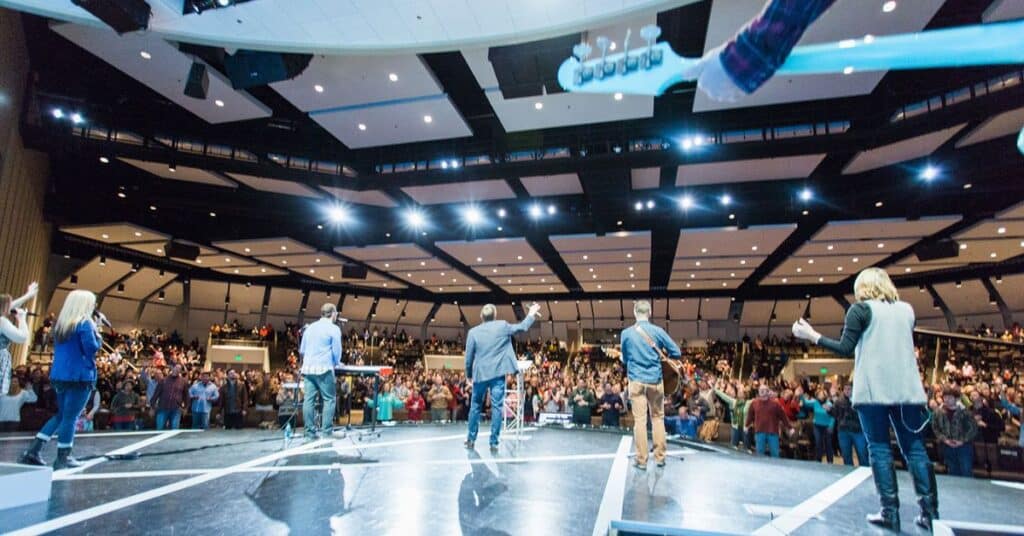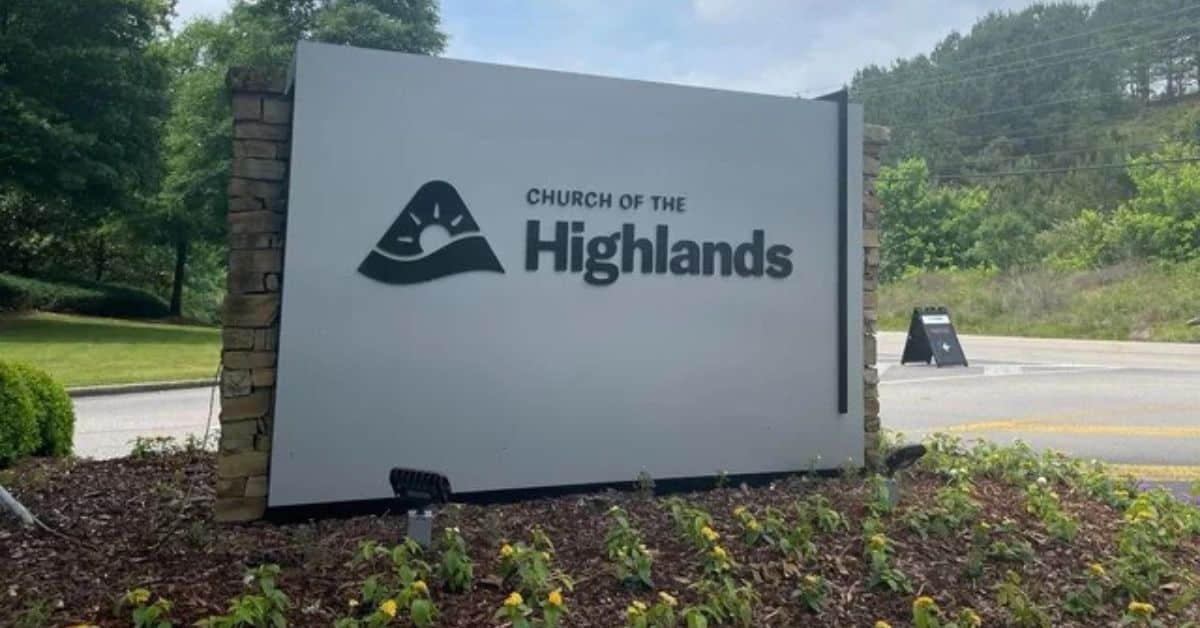The “Church of the Highlands Exposed” might refer to a hypothetical or real examination of the Church of the Highlands, one of the largest megachurches in the United States, based in Birmingham, Alabama. This church, known for its significant influence, extensive campus network, and dynamic online presence, often attracts attention for its growth, leadership, and community impact.
In 2024, discussions around the Church of the Highlands may center on various aspects, including its doctrinal positions, leadership decisions, financial transparency, and its role in local and national communities. Such exposures are not uncommon for large religious organizations, as their size and visibility invite scrutiny from both supporters and critics.
Critiques or investigations might delve into the church’s handling of sensitive issues, such as political involvement, social justice stances, or the management of its considerable resources. The aim of such exposures could range from seeking accountability to highlighting practices that are seen as exemplary or problematic.
History of the Church of the Highlands
The Church of the Highlands, founded in the early 21st century, quickly grew to become one of the most significant megachurches in the United States. Its inception was rooted in a vision to create a community-focused church that could offer spiritual guidance and support to a broad audience. Over the years, it expanded its reach by establishing multiple campuses across Alabama, making it a cornerstone of religious life in the region.
This church’s history is marked by rapid growth, driven by its contemporary worship style, engaging sermons, and the use of technology to reach members. Despite its expansion, the Church of the Highlands has faced challenges common to large religious organizations, including scrutiny over its practices and leadership.
The Allegations: Overview
In recent years, the Church of the Highlands has faced various allegations ranging from financial mismanagement to lack of accountability in its leadership structure. Critics have raised concerns about how decisions are made and the transparency of its operations. These allegations have sparked debates within the religious community and among the general public, prompting calls for more openness from the church’s administration.

The nature of these allegations covers a broad spectrum, including how the church handles donations, its political involvement, and the way it manages its extensive resources. These concerns have led to increased scrutiny from both the church’s supporters and its detractors, underscoring the need for clear communication and accountability mechanisms within the organization.
Financial Transparency
Financial transparency is a critical issue for any large organization, and the Church of the Highlands is no exception. Questions about how it allocates its considerable funds have been at the forefront of discussions. Supporters argue that the church has made significant contributions to community projects and charitable causes, demonstrating its commitment to using its resources for positive impact.
However, critics demand more detailed reporting and oversight, suggesting that the church should publish annual financial statements and undergo independent audits. This level of transparency, they argue, is necessary to build trust and ensure that funds are being used appropriately, in line with the church’s mission and the expectations of its members.
Read This Blog: Is Post Malone Gay? Separating Truth from Rumors Regarding His Sexual Orientation
Leadership and Governance
The leadership and governance structure of the Church of the Highlands have also come under scrutiny. At the heart of the debate is the concentration of decision-making power among a small group of leaders, which some argue could lead to a lack of accountability. The church’s rapid growth has only amplified these concerns, with calls for a more democratic governance model that involves a wider cross-section of the congregation in decision-making processes.

In response, the church has highlighted its efforts to involve various leaders and members in its governance through advisory boards and ministry teams. These efforts aim to ensure that the church remains responsive to its members’ needs and values while maintaining the vision and direction set by its founding leaders.
Internal Conflicts and Resolutions
Like any large organization, the Church of the Highlands has faced its share of internal conflicts. These have ranged from disagreements over doctrinal interpretations to disputes about the church’s direction and leadership style. Such conflicts are often magnified by the church’s size and diversity, posing challenges to maintaining unity and focus.
The resolution of these conflicts typically involves dialogue and mediation, with an emphasis on reconciliation and maintaining the spiritual and communal integrity of the church. The leadership often seeks to address concerns through open forums and discussions, aiming to find common ground and foster a sense of belonging among all members.
Member Testimonies and Experiences
Member testimonies and experiences at the Church of the Highlands vary widely, reflecting the diverse community it serves. Many members report positive experiences, citing the church’s welcoming atmosphere, inspirational services, and the sense of community it fosters. These positive accounts often highlight the church’s role in personal growth and spiritual development.
Also Read This Blog: xnxp Personality Traits 2024
Conversely, some members have shared experiences of feeling disconnected or disagreed with certain church practices. These testimonials underscore the challenges of meeting the expectations and spiritual needs of a large and diverse congregation, highlighting areas where the church can improve in fostering an inclusive and supportive environment.
Media and Public Perception
The media and public perception of the Church of the Highlands are shaped by a mix of positive coverage of its community involvement and critical reports on its controversies. The church’s outreach programs and charitable efforts often receive favorable attention, showcasing its commitment to making a tangible impact in the communities it serves.
However, allegations and internal conflicts have also attracted media scrutiny, leading to a more nuanced public perception. This coverage plays a crucial role in shaping the broader community’s view of the church, influencing both potential members and the general public’s understanding of its values and practices.
The Church’s Response to Exposures
In response to exposures and criticisms, the Church of the Highlands has taken steps to address concerns and reinforce its commitment to transparency and accountability. This has included increased communication with its members about financial practices and governance, as well as efforts to engage more directly with critics and address their concerns.

The church has also emphasized its ongoing commitment to community service and spiritual leadership, seeking to balance internal management improvements with its outward-facing missions. These responses are part of a broader strategy to maintain trust and credibility among its congregation and the wider community.
The Role of Social Media
Social media plays a significant role in shaping the Church of the Highlands’ public image and in how it communicates with its members. The church utilizes various platforms to broadcast services, share updates, and engage with both members and the wider public. This digital presence has allowed the church to reach a broader audience, but it has also served as a forum for public scrutiny and debate.
The church’s social media channels have become important tools for transparency, allowing it to address issues directly with its followers. However, they also present challenges in managing public perception and responding to criticisms in a fast-moving digital landscape.
Read This Blog: Paul Werdel: A Life of Journalism, Love, and Modesty
Future Outlook of Church of the Highlands
The future outlook of the Church of the Highlands hinges on how it navigates the challenges of growth, scrutiny, and the evolving expectations of its congregation. The church’s ability to adapt to changing societal norms, engage constructively with critics, and maintain its core mission will be critical in sustaining its influence and relevance.
As the church looks to the future, its leadership is likely to focus on strengthening governance structures, enhancing financial transparency, and fostering a more inclusive community. These efforts will be crucial in ensuring the church’s long-term viability and impact in a rapidly changing world.
Conclusion
The Church of the Highlands has faced significant scrutiny and challenges, reflecting broader trends in how large religious organizations navigate issues of transparency, governance, and community engagement.
While allegations and criticisms have prompted introspection and change, the church’s core mission of spiritual leadership and community service remains unchanged. Moving forward, the church’s ability to address these challenges head-on will be crucial in shaping its path and the impact it can have on its members and the wider community.
FAQ’s
What were the main allegations against the Church of the Highlands?
The main allegations have centered on financial mismanagement, lack of transparency, and questions about its leadership and governance structures.
How has the Church of the Highlands responded to these allegations?
The church has sought to increase transparency, particularly regarding financial matters, and has taken steps to engage more directly with its congregation and critics to address concerns.
What impact have the recent exposures had on the church’s community work?
While the exposures have prompted scrutiny, the church continues to emphasize its commitment to community work, aiming to maintain and even expand its outreach efforts.

I am Emma, a skilled writer and SEO expert. With years of experience in both fields, I love writing helpful articles readers love. I also want the articles to show up high on Google.
My goal is to make content that is both interesting and easy to find online.
I work hard to research topics, choose the right words, and organize information clearly.












